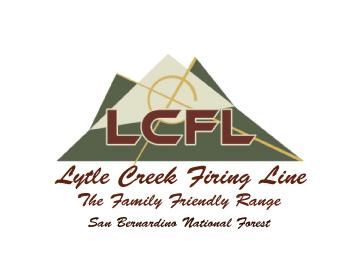Why the US Used Agent Orange in Vietnam and What Makes It so Deadly
- Home
- Journal
- Agent Orange
- Why the US Used Agent Orange in Vietnam and What Makes It so Deadly
Considered a powerful herbicide, Agent Orange became controversial after the United States military sprayed over 12,000 square miles of Vietnamese jungles to remove forest cover for Vietnamese troops in the Vietnam war. Sixty years later, the legacy of Agent Orange continues. It is not limited to the severe health concerns arising from exposure to Agent Orange but also the United States government’s liability for their reckless actions, the damage caused by a powerful herbicide, and how to care for the victims.
More Than $240 Million in Settlements!
In this Paul Ehline Ride blog, we will explore why the US used Agent Orange in Vietnam, what makes it so deadly, and why it’s led to over $240 Million in settlements so far. Let’s get started!
Agent Orange: Dioxin Contamination in Herbicides
Agent Orange is a mixture of various chemical herbicides, including Agent Blue, Pink, Purple, and more. It comes in three different variations. Also known as color-coded herbicides, these were much different than the common herbicides available in United States stores. Created in the 1940s, decades before the Vietnam War, the United States government produced Agent Orange as an agricultural defoliant for its characteristics. The herbicide could destroy some plants while leaving others unharmed. Convinced of the potential Agent Orange, the United States government approached nine American chemical companies, including Dow Chemical and Monsanto, to produce the herbicide for military use.
Under the Defense Production Act of 1950, manufacturers had to oblige the government’s request and started producing Agent Orange exclusively for the military. The manufacturers would start by mixing two herbicides, 2,4-D, and 2,4,5-T, common herbicide ingredients in the country’s agriculture industry. However, by tweaking the production process, the manufacturers were able to make these herbicides toxic. Adding TCDD, a Dioxin, would contaminate the chemical mixture and give it its liquid properties since, on its own, Agent Orange would dry up fairly quickly.
It was not until after 1954 that studies confirmed the toxicity of Agent Orange and Dioxin exposure. The United States military had the toxic Agent Orange during World War II but did not use it then. Surprisingly, the United Kingdom also manufactured the herbicide for their military and used it against rebel forces in Malaysia, setting an international precedent for the legality of the tactics they deployed.
Operation Ranch Hand: The US Engages in Chemical Warfare
When the United States became part of the Vietnam War, it faced a series of challenges against the Vietcong troops who would use the dense forests as part of their guerilla warfare tactics. Codenamed Operation Ranch Hand, the US military sprayed Agent Orange from 1961 to 1971 across 4.5 million acres of land, dousing it over roads, rice paddies, rivers, farmlands, and forests.
While Special Forces fought along the South Vietnam border, the US military personnel used toxic herbicide to destroy the forests the Vietnamese troops would hide in and cut down their food supply. However, in doing so, the military also effectively polluted the food crops and water the non-combatant native population of South Vietnam lived on. During the 10 years, the US military used more than 20 million gallons of Agent Orange across Vietnam, Laos, and Cambodia.
How Dangerous is Agent Orange Exposure?
The Dioxin contaminant known as TCDD had immediate and long-term human health effects upon exposure. Once sprayed into the environment, the Dioxin would remain in the soil, river sediments, and the food chain for years. The herbicide spray not only affected birds, mammals, and other animals but also humans who would ingest Dioxin by consuming contaminated food.
Universally recognized as a carcinogen, a cancer-inducing agent, studies conducted on lab animals showed that exposure to Dioxin, even in small doses, is highly toxic. Exposure to the toxic herbicide in the short term caused skin darkening, liver problems, and chloracne, a severe form of acne. Further studies showed that the carcinogen was linked to type II diabetes, heart disease, immune system disorder, and other complications.
Since Dioxin is highly toxic, it would severely affect developing fetuses resulting in birth defects, spina bifida, and miscarriages. In 1991, a study examining the health effects of occupational exposure to Dioxin revealed that it could lead to serious health concerns, including chronic bronchitis, chronic obstructive pulmonary disease, and more.
The Beginning of a Serious Controversy: Returning Vietnam Veterans Start Reporting Health Concerns
When the Vietnam veterans and their families returned to the United States after the war ended, they exhibited rashes, psychological symptoms, cancer, and other health disorders. Pregnant mothers suffered from miscarriages, and those born would face severe birth defects. However, the Department of Veterans Affairs stated that most cases were presumptive during that time.
In the early 1970s, returning veterans started questioning the possible linkage between their health conditions and their exposure to Agent Orange in Vietnam. In 1977, a benefits counselor, Maude deVictor, from the Department of Veterans Affairs (VA), received a call from a widow of a Vietnam war veteran. She believed that her husband’s cancer and eventually death were due to the exposure to agent orange and that the VA refused her the benefits she deserved.
Learning about the incident, deVictor started to research more about Agent Orange and the health effects it had on humans upon exposure. Disturbed by the phone call with the widow, deVictor approached Alvin L. Young, a plant physiology expert working for the US Air Force. She inquired about the types of herbicides used in the mixture. While conversing with Young, deVictor recorded the entire conversation about the usage and toxicity of Agent Orange. DeVictor’s investigation did not stop there. She started to learn more about their health conditions and gather statistics from veterans and their family members who would visit her office to inquire about their claims. Upon learning that deVictor was gathering statistics, the VA reached out to her and asked her to focus on her job rather than making additional irrelevant inquiries. However, her persistence to know the truth continued.
Soon, the controversy became the center of media attention as someone contacted the local news about deVictor’s inquiries on veterans. The local and national media became the fuel that helped spread the controversy among the masses as it started to report more on veterans’ complaints. In 1978, Paul Reutershan, a veteran responsible for transporting supplies for the war, spoke about how he flew daily through thick clouds of toxins released by C-123 cargo planes as he watched the dense mangrove forests wilt and die. Reutershan stated that at the time, he was unaware of the health risks of using the herbicide as the US Army and Air Force had told their officers that there were no health concerns for soldiers exposed to Agent Orange.
However, upon returning home, Reutershan got diagnosed with cancer and died when he was just 28 years old. Before his death, he had heard about deVictor’s efforts in collecting data correlating health problems and the toxic herbicide. He decided to approach a personal injury attorney and file a lawsuit against the chemical manufacturers responsible for the deadly herbicide.
Agent Orange Litigation: Start of Class Action Lawsuits Leading to Millions in Settlements
Soon after filing a lawsuit, Reutershan died of cancer, but his legal action laid the foundation of one of the nation’s largest class-action lawsuits.
In 1979, a few years after the Vietnam veterans returned from the war, the first class action lawsuit was filed by veterans exposed to Agent Orange. Five years after the case was first filed, seven large Agent Orange manufacturers agreed to pay $180 million to the affectees or next of kin. Since then, more lawsuits have made their way to the Supreme Court. In 1988, there were lawsuits filed by 300 veterans amounting to $240 million in settlements to United State’s Agent Orange victims from the Vietnam war. In 1991, George H. W. Bush signed the Agent Orange Act that would allow veterans to receive medical benefits and disability compensation for some diseases associated with Agent Orange.
Legacy of Agent Orange: Destruction Left Behind as the US Exits the Vietnam War
After the United States military exited Vietnam, the Vietnamese government assessed the damage left behind by US troops. Besides massive environmental destruction, Agent Orange in Vietnam killed or injured more than 400,000 Vietnamese. The country claims that the herbicide led to half a million congenital disabilities. At the same time, there were still 2 million Vietnamese suffering from cancer and other Agent Orange-related health problems.
Dr. James Clary, an Air Force researcher, closely working on Operation Ranch Hand, stated in 1988 that when US troops started using Agent Orange, they were aware of its toxic characteristics. Still, since they used it to hinder the enemy, they never considered the long-term effects of Agent Orange exposure.
In 2004, Vietnamese victims filed a class action lawsuit to hold more than 30 Agent Orange manufacturers accountable for the damages, the same companies that settled with the US veterans. The case claimed that the use of Agent Orange violated international law and that the veterans are seeking billions of dollars in compensation for the destruction left behind by the US military. However, in March 2005, a federal judge dismissed the lawsuit. Persistent and hopeful for justice, the Vietnamese victims appealed. Unfortunately, in 2008, the US court rejected the appeal, infuriating the Vietnamese victims and the US veterans.
Fred A. Wilcox, a retired associate professor and an author of books on various issues, including the Vietnam war, spoke to Vietnamese news reporters stating that the United States refused to compensate the Vietnamese victims as doing so would mean that the country admitted to war crimes and chemical warfare carried out in Vietnam. It could lead to a barrage of legal battles resulting in tens of billions of dollars in loss to the United States government.
At Paul Ehline Ride, we raise our voices against injustices and stand with our fellow marines and veterans. This year, we celebrated the Third Annual Paul Ehline Memorial Motorcycle Ride in memory of Paul Ehline, a Marine Sgt. and Vietnam veteran. They passed away from cancer resulting from exposure to Agent Orange.
If you’re veteran suffering injuries from Agent Orange, we understand the pain and suffering you’re going through. Contact us at (310) 622-8719 for a free consultation on your VA disability claim.
Resources
General Stuff
Address
Paul Ehline Ehline Memorial Ride
3838 W Carson St.
Torrance, CA 90503
Phone : (310) 622-8719
© paulehlineride.org. All rights reserved.
Donations submitted through donation forms on PaulEhlineRide.Org are tax-deductible to the fullest extent allowed by U.S. and state laws. These will be in U.S. Federal Reserve Notes. Paul Ehline Memorial Ride™ is a U.S. nonprofit, tax-exempt charitable Section 501(c)(19) organization that benefits US Armed Forces veterans under the U.S. Internal Revenue Code. (Tax identification number 85-4040563.)





